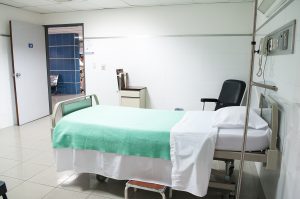All that any of us hope for at a time of ill health is timely and efficient care provided by qualified professionals. More often than not that’s exactly what we get, but there are occasions, which are more common than you might think, when that doesn’t happen. Kate Campbell-Gunn, an expert in medical negligence law at the Wilkes Partnership, looks at one condition that can result from inadequate care and asks: pressure sores – a time to seek legal advice?
Kate says “Pressure sores develop when skin is placed under enough pressure to impair the blood supply which causes it to break down. Typically, but not exclusively, they are most likely to affect someone who is confined to their chair or bed”.
According to research by the National Health Executive, in more than 90% of cases pressure sores could, and should, have been prevented by better medical care. They are a painful and debilitating condition which can result from failing to:

- Move and position patients who have limited mobility
- Provide appropriate support, such as a pressure relieving mattress
- Handle the patient with sufficient care
- Ensure appropriate diet and hydration.
After that quite shocking statistic, Kate continues “Given that basic standards of care can prevent the condition, it comes as little surprise that medical negligence compensation can be awarded if a patient develops pressure sores”.
What are pressures sores and how are they caused?
Pressure sores are a type of injury that breaks down the skin and underlying tissue, ranging in severity from patches of dis-coloured skin to open wounds exposing bone or muscle. They can develop anywhere on the body when an area of skin is placed under pressure, but are most common over bony prominences and in people with underlying poor health.
They can also be referred to as “bedsores” or “pressure ulcers”.
A pressure ulcer develops when a large amount of pressure is applied to an area of skin over a short period of time, or when less pressure is applied over a longer period of time. The pressure disrupts the flow of blood through the skin which is then starved of oxygen and nutrients. The skin begins to break down and an ulcer forms.
It is estimated that just under half a million people in the UK will develop at least one pressure sore in any given year. It is important that pressure sores are managed effectively, but mistakes do occur.
How can pressure sores be prevented?
For some people, pressure sores are an inconvenience that requires minor nursing care. Treatments include dressings, and creams or gels which are designed to speed up the healing process and relieve pressure. Unfortunately, in some of the more serious cases they can require surgery or lead to life-threatening complications such as blood poisoning or gangrene.
Patient care
Patients should expect a high standard of care and appropriate treatment. Healing is not usually a fast process but, with adequate pressure redistribution, good nutrition and appropriate wound management, the condition will heal in most cases.
Kate added “A ‘Grade 1’ pressure sore is classed as being a significant risk for developing more severe ulcers so interventions to prevent deterioration, possibly pain relief or infection control, should be put in place. A patient presenting extensive superficial pressure sores, classed as ‘Grade 3’ or ‘Grade 4’, or when the condition is deteriorating, should be referred to a specialist service”.
Treatment should also include nutritional support, possibly referral to a dietician, in cases where a patient is categorised as poorly nourished and at risk of developing pressure ulcers.
Kate continued “Potentially, any patient is at risk of developing a pressure ulcer, but neurological conditions, impaired nutrition or poor posture increase that risk factor. Chairs and beds not specially designed to relieve pressure can also lead to pressure ulcers”.
NICE Pressure Ulcer Guidance
The latest NICE guidance, based on the best available evidence on preventing and managing pressure ulcers, applies to everyone in NHS care. It recommends risk assessment methods and preventative measures, as well as how to treat pressure ulcers with wound care, adjunctive therapies and support surfaces.
Finally, Kate said “It is worth remembering that pressure ulcers are often preventable and the NICE guidance mentioned here aims to reduce the occurrence of pressure ulcers within NHS settings. However, if you suffer from a pressure ulcer that could have been prevented, you may have a pressure ulcer claim”.
Pressure sores: a time to seek legal advice? If you or a family member has suffered from pressure sores or ulcers you may be able to claim compensation. Contact Kate Campbell-Gunn at the Wilkes Partnership on 0121 733 4314 or at [email protected]. Your claim will be assessed by one of our expert medical negligence lawyers who will establish liability quickly so that you receive any compensation without delay.

